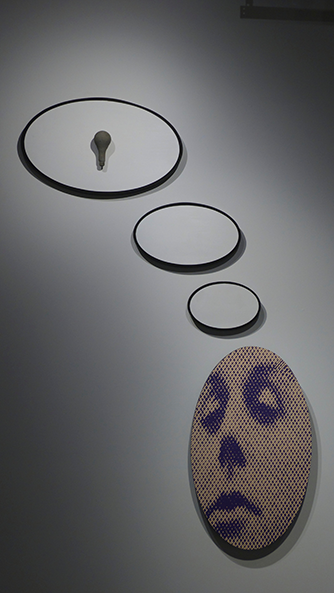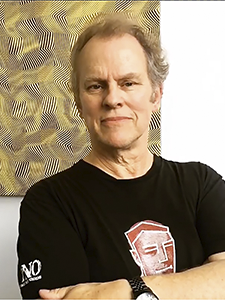Former Faculty
School of Visual Art, AUArts
AUArts Alum 1979, Diploma | Painting
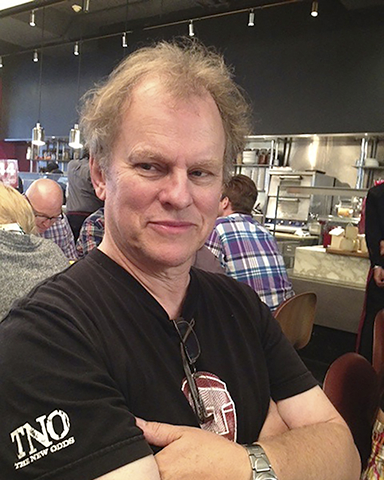
AUArts: What do you do?
Chris Cran: I’m a visual artist, a painter, and I taught at ACAD (now AUArts) for a number of years.
AUArts: What have you been doing in the last few years?
Cran: Working in my studio. In 2016, I had a big exhibition at the National Gallery of Canada. The year before I had exhibitions at the Art Gallery of Alberta and at the Southern Alberta Art Gallery. Those shows combined for the National Gallery survey exhibition.
I just had a show at the Glenbow that ran for several months, curated by Nancy Tousley for her One New Work project. The next show that I’m getting ready for is at the Nickle Arts Museum, curated by Christine Sowiak, which opened September 2019.
AUArts: When did you graduate, and what degree do you have?
Cran: Graduated 1979. I have a diploma from SAIT (ACA as it was known then was once part of SAIT). I didn’t go on to get anything further, because number one, I had six children. My fifth was born two weeks after I started art college, and the sixth was born a couple of years later. I had to get a job and make a living.
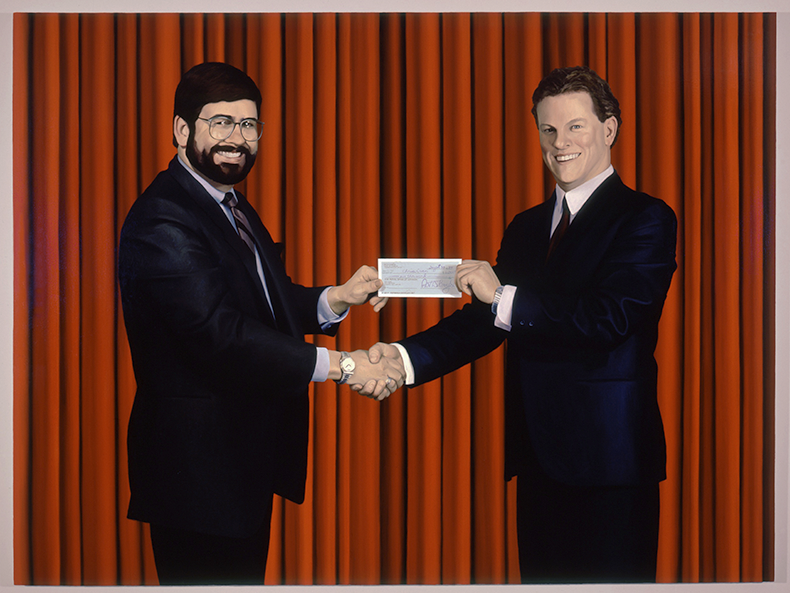
AUArts: What were those first jobs that you had? Were they related to art?
Cran: No, I read electric and water meters for a number of years and carried on making art in my spare time.
AUArts: How did you begin making art?
Cran: I had a friend – two friends – who got me involved in painting. One who’s a painter and a musician, named Herald Nix. We were friends from a very young age in Salmon Arm, where I grew up. At some point he went to art college, and I watched what he did as he developed his work. One day he said, “You should try this.” He gave me a board and some paint and I started painting. I was hooked!
The other friend was named Steve Mennie, who was also a musician from Salmon Arm and a realist painter, and he showed me some techniques. While I was in art college I used the techniques he showed me in taking on portrait commissions.
In 1984, I started a series of self-portraits painted in a realist manner, and that got my career rolling.
AUArts: I read that you have a great-grandfather who was a British watercolourist.
Cran: My great grandfather was a watercolourist and an antique dealer. The house I grew up in had a lot of watercolours from the 1800s that had remained in the family. But really, it was my friend, Herald Nix, who turned me onto other artists like Picasso, Matisse, Group of Seven, David Milne, when I was in my teens.
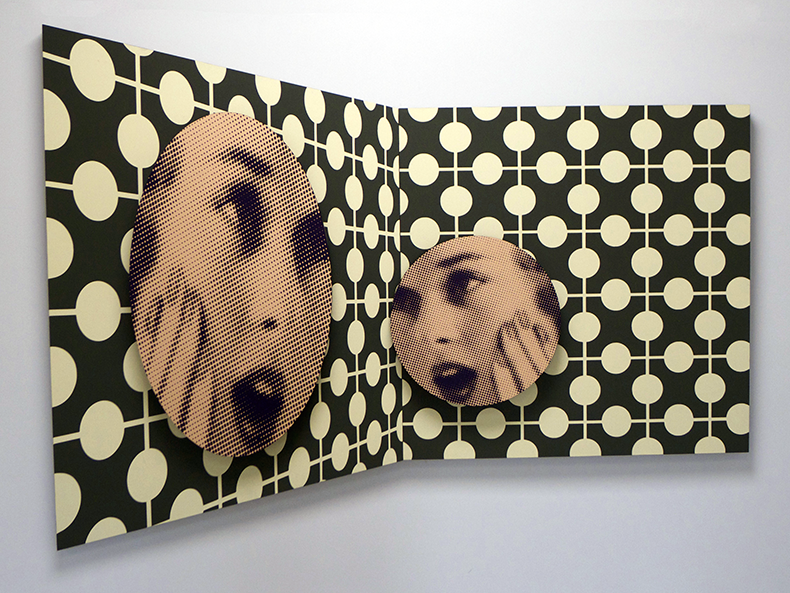
AUArts: How did you end up going to art school?
Cran: I began painting in 1970, the same year I began what I thought was to be a career in filmmaking. I worked on a film crew at the Ontario Institute for Studies in Education (OISE). During this time, I continued to make paintings. I married my first wife in 1973 and decided to remain in Salmon Arm. In 1974, a friend of mine who was going to the Kootenay School of Art in Nelson came through Salmon Arm, and looked at my paintings. He said, “You should go to art school.” This had never occurred to me.
So we looked into it. I went to Kootenay School of Art for my first year, and upon finishing I knew I needed to see more art in a larger city. My choices for art college were the Vancouver School of Art or ACA (now AUArts). I decided Vancouver was too expensive, so we came to Calgary.
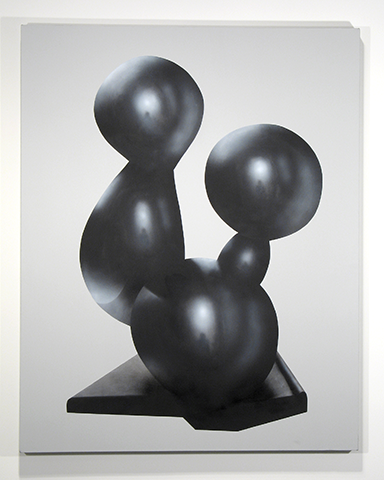
AUArts: How did you talk to your parents about wanting a career in art? What advice would you give to someone whose parents don’t want them to pursue an arts degree
Cran: I was 25 when I started art college. My parents were just supportive of whatever I wanted to do. They were great.
Over the years, I’ve seen a lot of parents worried about their children, but an education is an education. I’ve had students that I knew that would never do anything. But I’ve had students that were so thrilled and excited to be in it, and that thrill and excitement will take them somewhere. That’s the key.
“Look around you. Everything you see, a spoon, a fork, went through the mind of an artist. The design of a chair you’re sitting in. The spoon you’re holding. They all went through the mind of an artist. It’s way bigger than people know.” Artists are doing architecture, art, design, all sorts of things.
It’s vast.
Bruce Ferguson, a distinguished educator, curator and critic, who just passed away, gave a talk here at the art college several years ago. At the time he was President of Otis College of Art and Design, a campus in Los Angeles. He said, “Look around you. Everything you see, a spoon, a fork, went through the mind of an artist. The design of a chair you’re sitting in. The spoon you’re holding. They all went through the mind of an artist. It’s way bigger than people know.” Artists are doing architecture, art, design, all sorts of things. It’s vast.
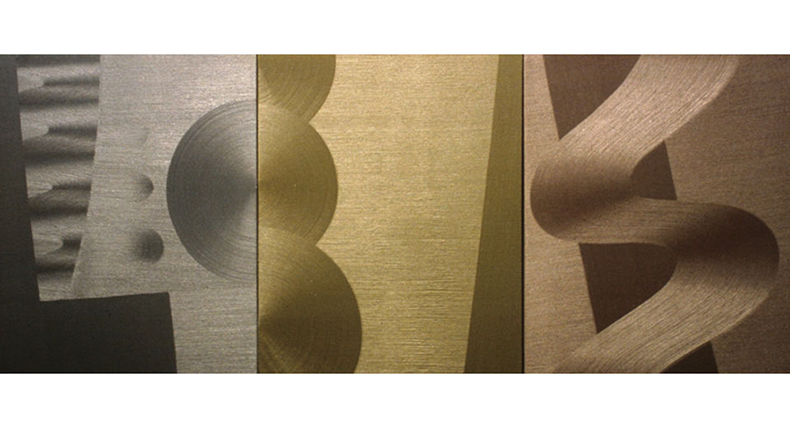
AUArts: What’s the most important thing you learned at AUArts?
Cran: I learned several things. A great painting instructor taught a technique of reducing everything you’re looking at, while painting from life, to simplified shapes. You can kind of squint and you can reduce it – that
was a pretty great thing to learn. The other thing I learned was from my favourite instructor at AUArts. Her name was Vera Gartley. She retired a few years ago. She basically let me do whatever I wanted. She encouraged to play. With play, you can do all sorts of things. Try this out, try that out. It takes you
places. It encourages curiosity. And it doesn’t judge. Vera Gartley gave me positive, almost joyful encouragement. In my final year of art college, she traded me a drawing I had made for a trip to New York. She eventually donated it to the Nickle Art Museum.
In New York for my first time, I saw a Rothko show at the Guggenheim. At the Museum of Modern Art, I came upon David Hockney looking at Matisse cutouts. I found stuff in barrels in shops on
Canal Street that I went on to use for making art upon my return. The trip was an amazing adventure!
I also really appreciated having so much studio time (at AUArts). That’s where I got things done. My advice to students would go to your studio and get to work. Because that’s where it takes place. It’s not thinking about it, it’s doing it. Thinking about it happens anyway. I think another thing that I would say to students is get out there and SEE lots of art. Expose yourself to the great museums of the world. I went to the Guggenheim years ago, and there was a small gallery in the back, including a painting by Cezanne. It was a small painting of a meadow on a hot summer day. And I’m standing in front of it, looking at it. And all of a sudden, I was of my family home on a hot summer day. And I thought, wow, that’s amazing that I’m getting this sensation. And I know how Cezanne did it. He saw a spot of colour there. And he mixes that colour and puts it down with a physical brush stroke. What’s next to it? A different colour. So the whole painting is built up of these brush strokes. But what he did, is he got the colour right. And therefore, he got the light right and my nervous system knows through a zillion experiences what the temperature of that light is. I looked at it for several minutes in amazement, and then I decided it was time to go. I turned to leave, and my body turned, but my head didn’t because my gaze was still held into the space of that painting. I wrenched my neck painfully. What space? All this created by some coloured muck on a flat surface. Art can be magic!
